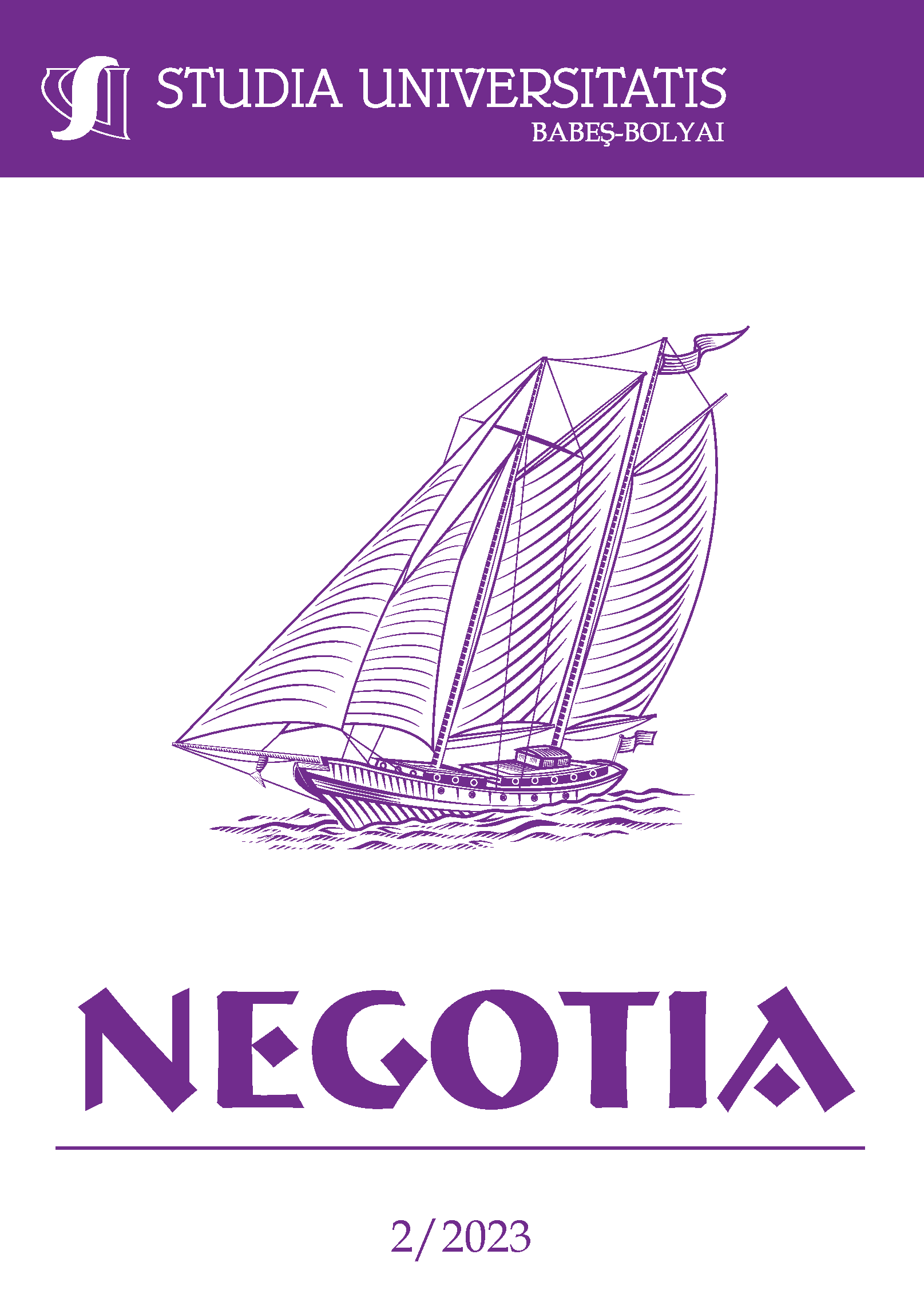THE DEVELOPMENT OF A HUMAN CAPITAL MEASUREMENT AND DISCLOSURE RESEARCH INSTRUMENT FOR THE ZIMBABWEAN MINING COMPANIES
DOI:
https://doi.org/10.24193/subbnegotia.2023.2.02Keywords:
human capital; measurement; disclosure; mining companies; ZimbabweAbstract
Purpose: The aim of this study is to develop a research instrument to measure and disclose human capital value in the financial statements. The study has been motivated by a lack of guidelines that determine key aspects of human capital despite its contribution to value creation and financial performance. Methodology: This study adopted a post-positivist research philosophy which endorses a quantitative research approach. Quantitative data were collected using the survey questionnaire instrument from the six listed mining companies in Zimbabwe. A convenience sampling technique was utilised and a human capital measurement and disclosure instrument was validated using the exploratory factor analysis. Findings: The paper established eight factors namely; human capital measurements, profitability measures, employee competencies, value drivers, performance-related factors, market-related factors, employee exposures and structure-related factors. The developed questionnaire instrument can be of use to other scholars and policymakers if their studies are aiming to investigate the respondents’ perceptions towards human capital reporting. This will also, provide a basis for the development of a standardised universal approach to measuring human capital value.
JEL Classification: J24, D19
Article history: Received: May 5, 2023; Reviewed: June 7, 2023; Accepted: June 15, 2023; Available online: July 31, 2023; Available print: August 30, 2023.
References
Anyanwu, J.C. 2012. Why does foreign direct investment go where it goes? New evidence from African countries. Annals of Economics and Finance, 13-2: 433-470.
Becker, G. S. 1974. Human capital. New York: McGraw Hill.
Brown-Martin, G. 2018. Education and the Fourth Industrial Revolution (Learning to Thrive in a Transforming World). In 11th annual International Conference of Education, Research and Innovation: Seville, Spain.
Burton-Jones, A. & Spender, J.C. 2011. Interdependencies between People and Information Systems in Organizations’, in Burton-Jones, A. and Spender, J-C. (eds.), The Oxford Handbook of Human Capital, Oxford, Oxford University Press.
Butler, A. 2013. Resource nationalism and the African National Congress, The Journal of the Southern African Institute of Mining and Metallurgy, 113(1): 11-20.
Chamber of Mines of Zimbabwe. 2022. Annual report. Retrieved from https://www.chamines.co.zw/home/AnnualReport.
Chen, M.Y. C., Lam, L.W. & Zhu, J.N.Y. 2021. Should companies invest in human resource development practices? The role of intellectual capital and organizational performance improvements. Personnel Review, 50(2): 460-477.
Chukwunenye, I.O., & Igbokwe, B.N. 2011. Training, manpower development and job performance: perception and relevance among civil servants in Ebonyi State, Nigeria. Journal of Economics and International Finance, 3(6):399-406.
Edvinsson, L. 2012. Developing intellectual capital at Skandia. Long Range Planning, 30:336-373.
Fatoki, O. & Garwe, D. 2011. Obstacles to the growth of new SMEs in South Africa:
A principle component analysis approach. African journal of business and management, 4 (5):7.
Field, A. 2005. Discovering statistics using IBM SPSS statistics (3rd ed.). London, UK: SAGE Publications.
Fook, J., Collington, V., Ross, F. & Brookfield, S. 2015. Researching critical reflection multidisciplinary perspectives. Taylor and Francis.
Fulmer, I.S. & Ployhart, R.E. 2014. Our Most Important Asset: A Multidisciplinary/ Multilevel Review of Human Capital Valuation for Research and Practice. Journal of Management, 401(1):161-192.
Gerber, H. & Hall, R. 2017, Quantitative research design. Pretoria: HR Statistics.
Hair Jr, J. F., Black, W. C., Babin, B. J. & Anderson, R. E. 2014, Multivariate Data Analysis. 7th Ed. Essex: Pearson Education Limited.
Hatcher, L. 1994. A Step-by-Step Approach to Using the SAS System for Factor Analysis and Structural Equation Modelling. SAS Institute, Inc., Cary.
Healy. P. & Palepu, K. G. 2001. Information asymmetry, corporate disclosure, and the capital markets: A review of the empirical disclosure literature. Journal of Accounting and Economics, 31(1): 405-440. 29-738.
Higson, C. 2016. Reporting Human Capital: Accounting for Human Resources. Journal of Accounting & Finance, 8(10): 330-350.
Iatridis, G. E. 2012. Voluntary IFRS disclosures: evidence from the transition from UK GAAP to IFRSs. Managerial Auditing Journal, 27(6): 573-597.
Labra, R. & Sanchez, M. P. 2013. National Intellectual Capital Assessment Models: A Literature Review. Journal of Intellectual Capital, 14(4):582.
Lin, C. Wang, C. Wang, C. Y. & Jaw, B. S. 2017. The role of human capital management in organizational competitiveness. Social Behavior and Personality An International Journal, 45(1):81-92.
Moloi, T. & Adelowotan, M. 2019. The perception of investment analysts on the decision-usefulness of human capital disclosures: a South African context. Academy of Accounting and Financial Studies, 22(5).
Mondal, A. & Ghosh, S. 2012. Intellectual capital and financial performance of Indian banks. Journal of Intellectual Capital, 13(4): 515-530.
Newman, B.H. 1999. Accounting recognition of human capital assets. New York: Pace University Press.
Rowe, B.J. and Widener, S.K. 2011. Where Performance Measurement and Knowledge Management Meet: Evaluating and Managing Corporate Knowledge. Journal of Accounting and Finance, 11(2): 91-106.
Schutte, D. Hugo, J. & Derbyshire, E. 2021. Value creation perceptions of management accountants in South Africa. African Journal of Accounting and Financial Research, 4(3): 120-138.
Stahle, P., Stahle, S. & Lin, C.Y.Y. 2015. Intangibles and national economic wealth – a new perspective on how they are linked. Journal of Intellectual Capital, 16 (1):20-57.
Stewart, T. A. 2011. Intellectual capital: The new wealth of organisations. London: Nicholas Brealey.
Suadiye, G. 2012. Value relevance of book value and earnings under the local GAAPs and IFRS: Evidence from Turkey. Ege Akademik Bakis, 12(3):301-310.
Tan, E. 2014. Human capital theory: A holistic criticism. Sage Publications.
Zhou L, Bao J, Setiawan I, Saptono A, & Parmanto B. 2019. The Health App Usability Questionnaire (MAUQ): Development and Validation Study. JMIR Mhealth Uhealth, 7(4):e11500.
Downloads
Published
How to Cite
Issue
Section
License
Copyright (c) 2023 Studia Universitatis Babeș-Bolyai Negotia

This work is licensed under a Creative Commons Attribution-NonCommercial-NoDerivatives 4.0 International License.






